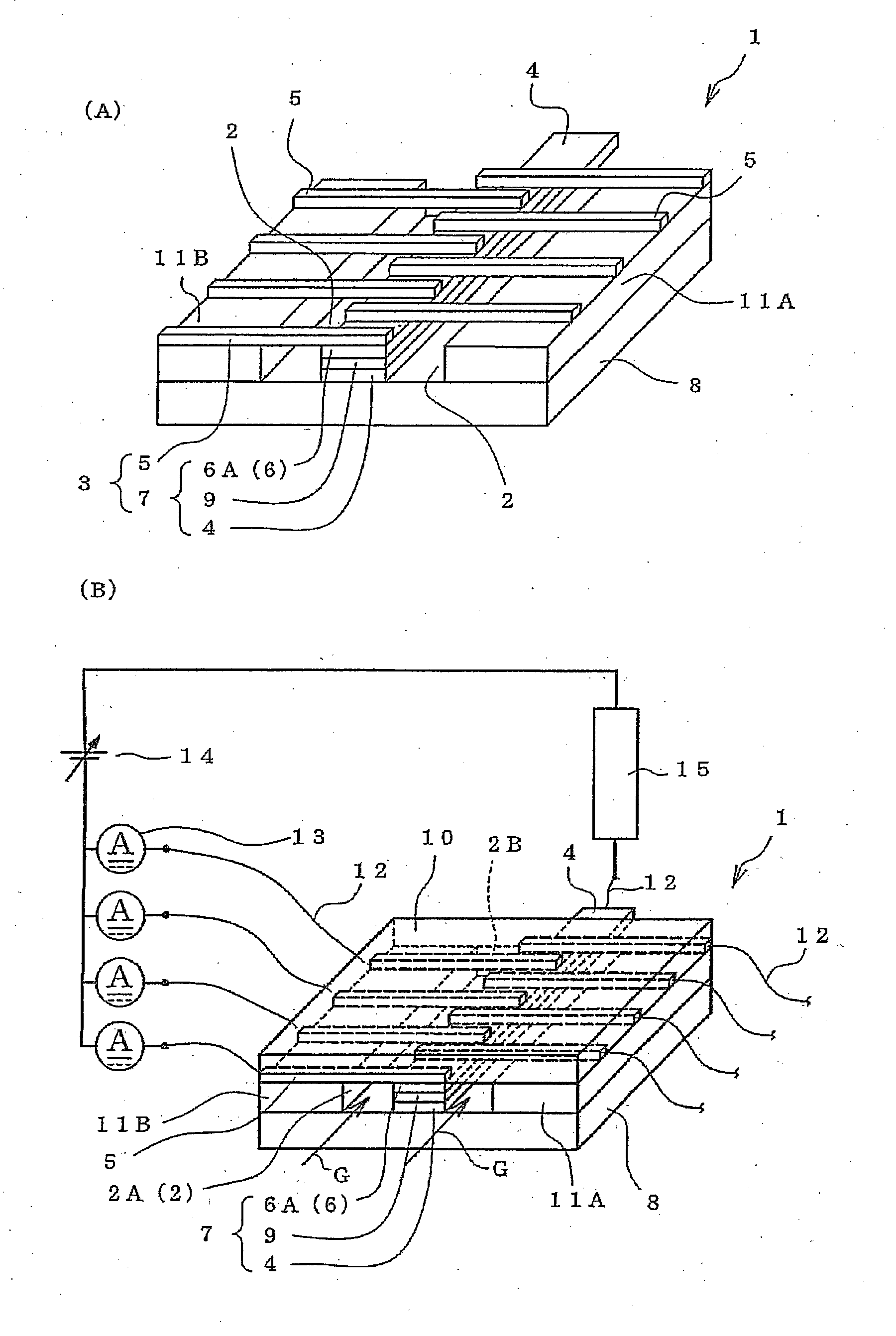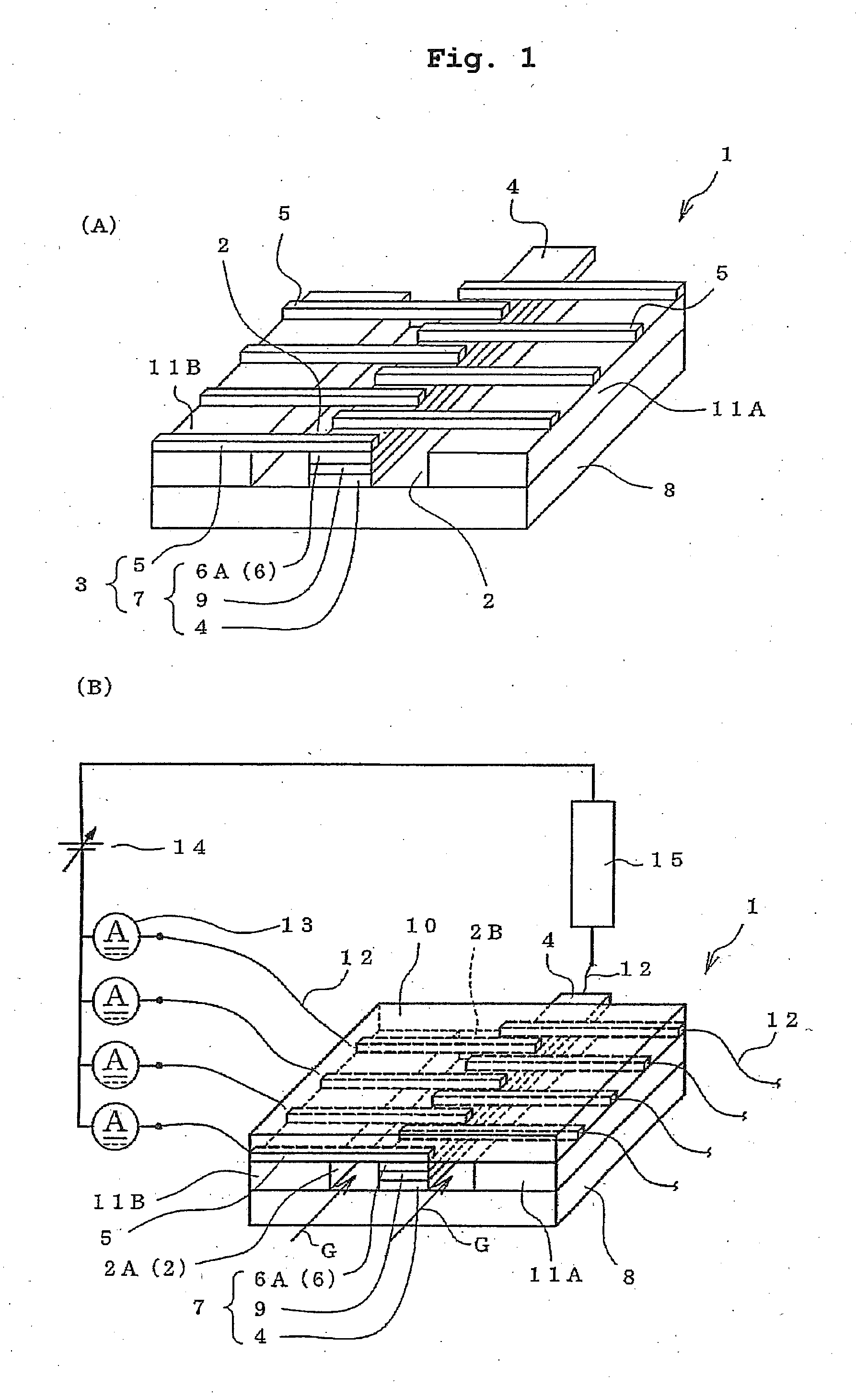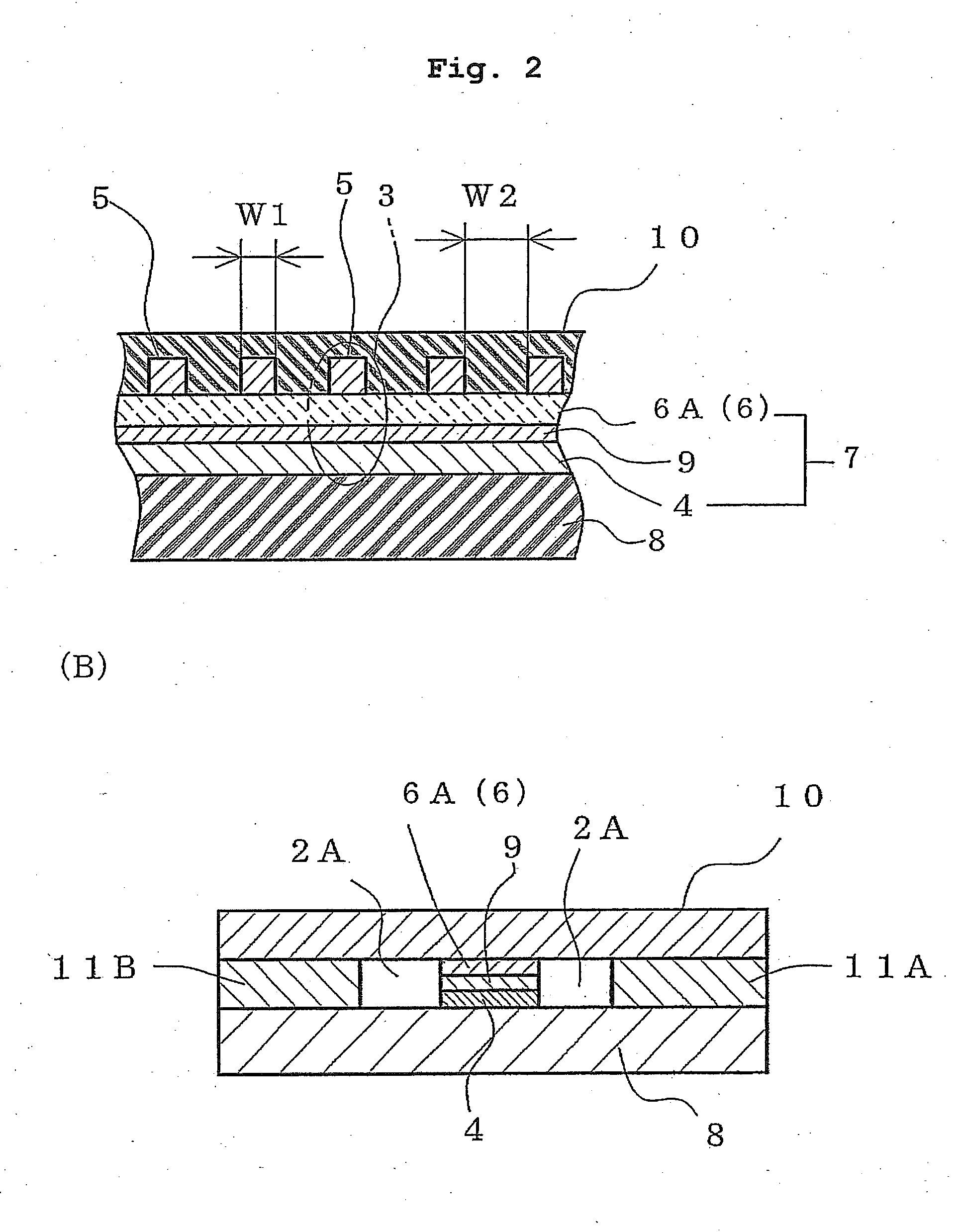Gas sensor array, gas analysis method, and gas analysis system
a gas sensor array and array technology, applied in the field of gas sensor arrays, gas analysis methods, gas analysis systems, can solve the problems of difficult to distinguish a gas with a gas sensitive material with similar reactivity (sensitivity), and the gas sensor array is not very good at discriminating gas types, etc., to achieve the effect of easy production, superior gas type discrimination ability, and short tim
- Summary
- Abstract
- Description
- Claims
- Application Information
AI Technical Summary
Benefits of technology
Problems solved by technology
Method used
Image
Examples
example 1
Semiconductor Microcrystal
[0159]As semiconductor microcrystal, selenium nanowire was prepared. The selenium nanowire was prepared by the following method.
[0160]Commercially available granular amorphous selenium (purity: 99.9999%, Rare Metallic Co., Ltd.) was milled into a fine powder in a mortar. The granulated amorphous selenium was amorphous particle having a particle size of 20-30 μm. The finely divided powder of amorphous selenium (512 mg) was cast into ethanol (1 mL) in a glass tube, and the mixture was left standing at room temperature for 9 days. Ethanol was evaporated, and the residue was air-dried to give selenium nanowire. The size of the selenium nanowire was about 280 nm in diameter and about 2.6 μm in length. WO 2011 / 055751 (patent document 1) by the applicant of the present application can be referred to as for the adjustment of the shape and size of microcrystalline selenium.
[0161]On one surface of a copper-clad laminate (insulating layer: glass epoxy) using a copper ...
experimental example 1
[0169]1-Propanol was dropped onto a cotton swab (5 mmφ, length 10 mm), the tip of this cotton swab was set at 1 mm from the gas sensor located most closely (the first gas sensor) to the gas introduction port into the gas flow path of the gas sensor array produced in the above-mentioned Example. The gas volatilized from the cotton swab was flown from the gas introduction port 2A in the gas flow path 2 and the time-change spectra of electric current change of the first gas sensor (det 1), the fifth gas sensor (det 5), the ninth gas sensor (det 9) and the thirteenth gas sensor (det 13) were measured. The results thereof are shown in FIG. 7(A) and FIG. 7(B).
experimental example 2
[0170]Methanol was dropped onto a cotton swab instead of 1-propanol and, in the same manner as in Experimental Example 1, the gas volatilized from the cotton swab was flown in the gas flow path of the gas sensor array, and the time-change spectra of electric current change of the first gas sensor (det 1), the fifth gas sensor (det 5), the ninth gas sensor (det 9), the 11th gas sensor (det 11) and the thirteenth gas sensor (det 13) were measured. The results thereof are shown in FIG. 8(A) and FIG. 8(B).
PUM
| Property | Measurement | Unit |
|---|---|---|
| thickness | aaaaa | aaaaa |
| total thickness | aaaaa | aaaaa |
| particle size | aaaaa | aaaaa |
Abstract
Description
Claims
Application Information
 Login to View More
Login to View More - R&D
- Intellectual Property
- Life Sciences
- Materials
- Tech Scout
- Unparalleled Data Quality
- Higher Quality Content
- 60% Fewer Hallucinations
Browse by: Latest US Patents, China's latest patents, Technical Efficacy Thesaurus, Application Domain, Technology Topic, Popular Technical Reports.
© 2025 PatSnap. All rights reserved.Legal|Privacy policy|Modern Slavery Act Transparency Statement|Sitemap|About US| Contact US: help@patsnap.com



